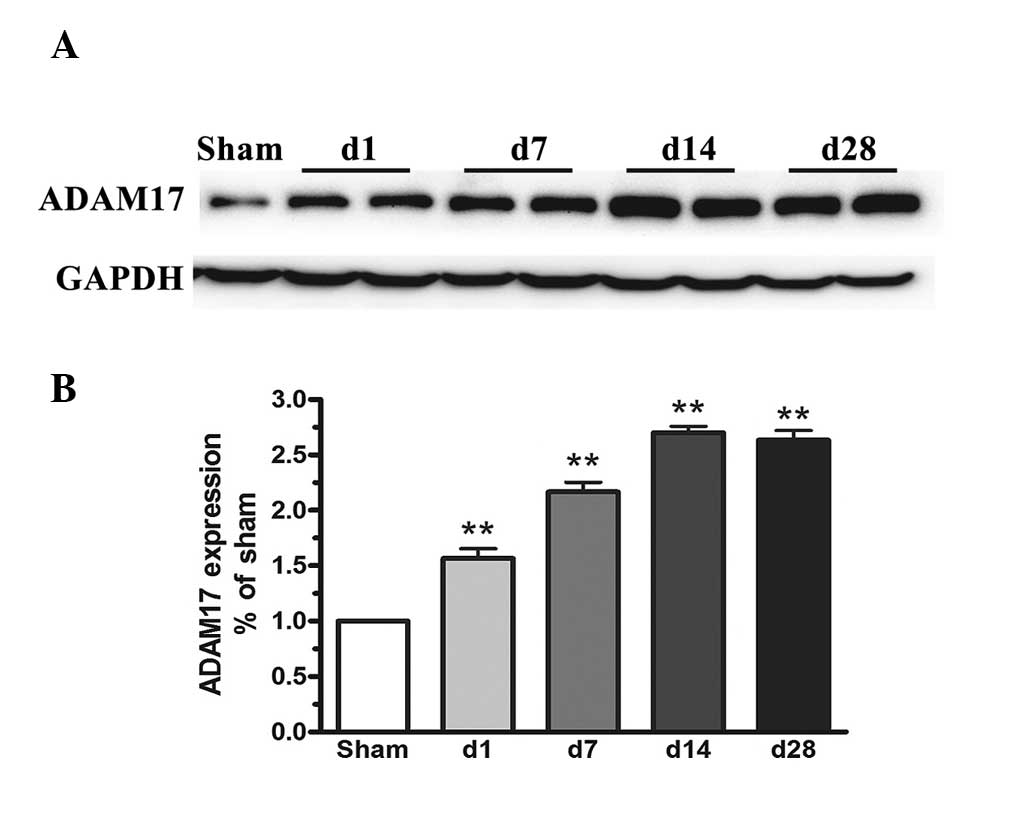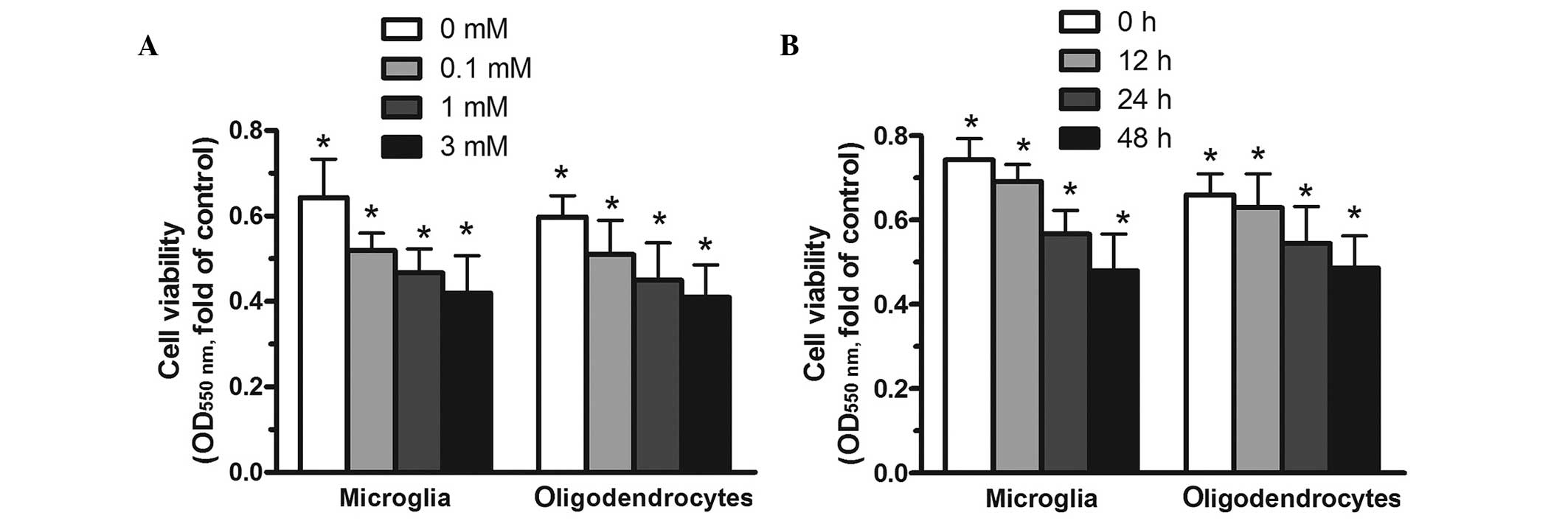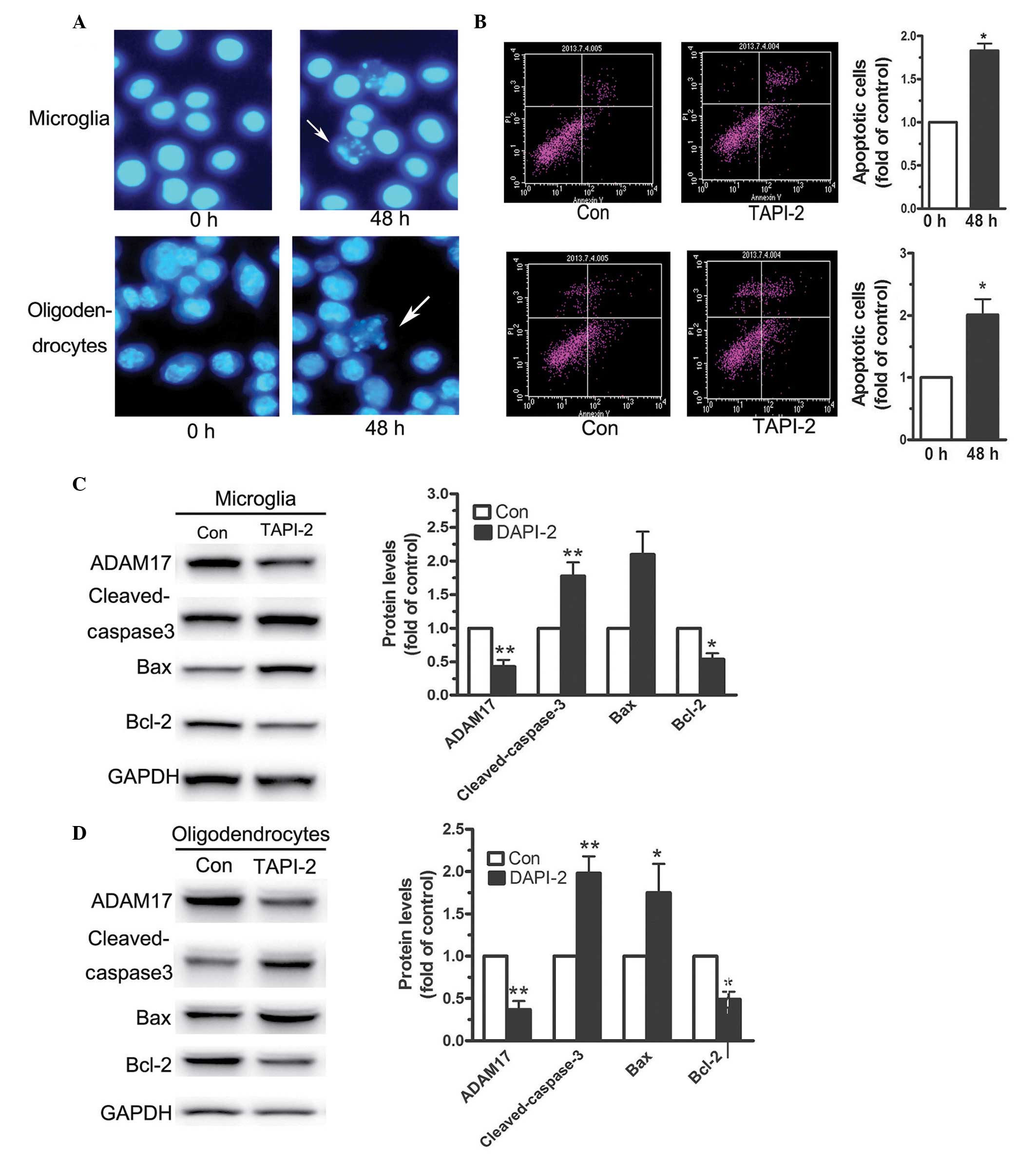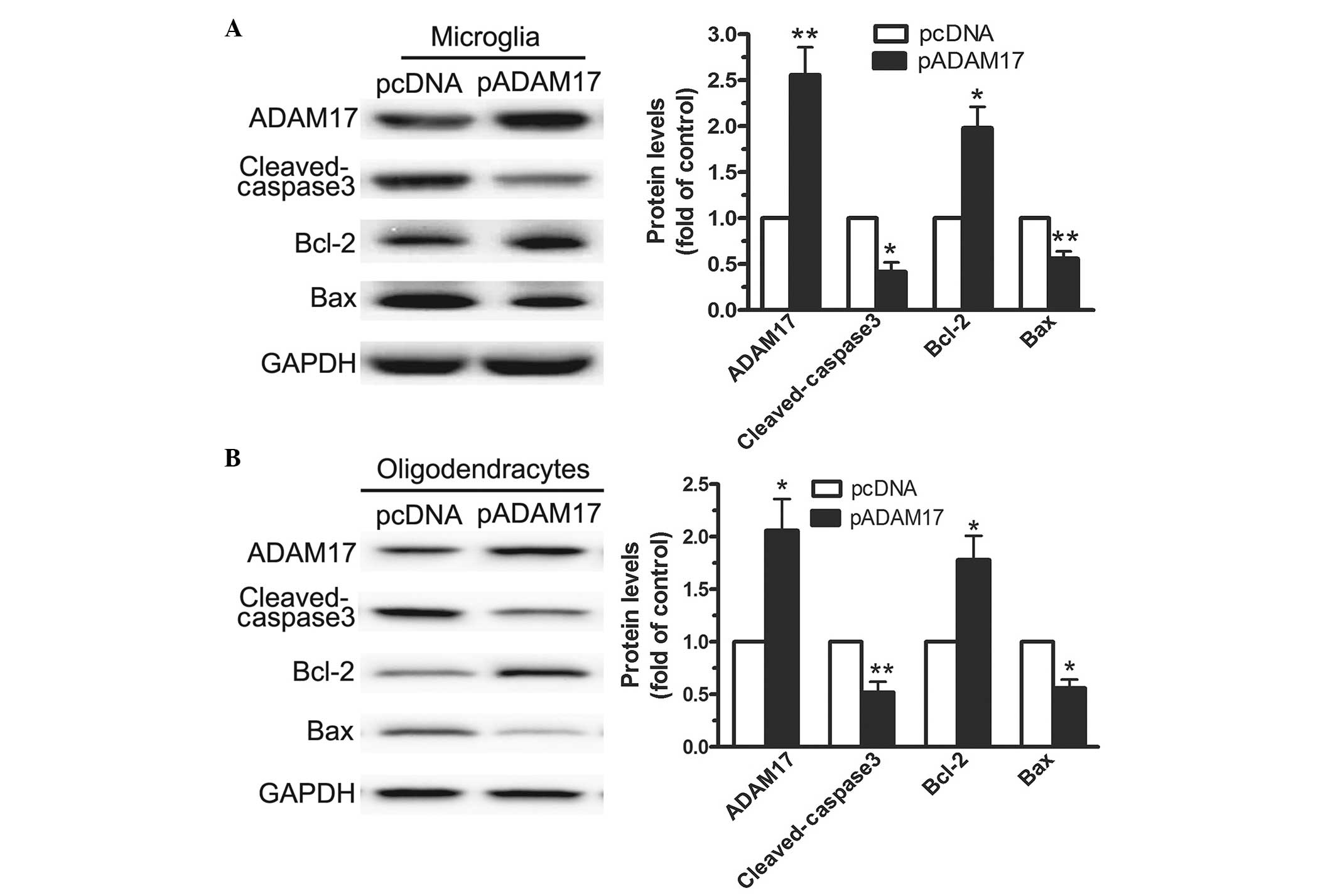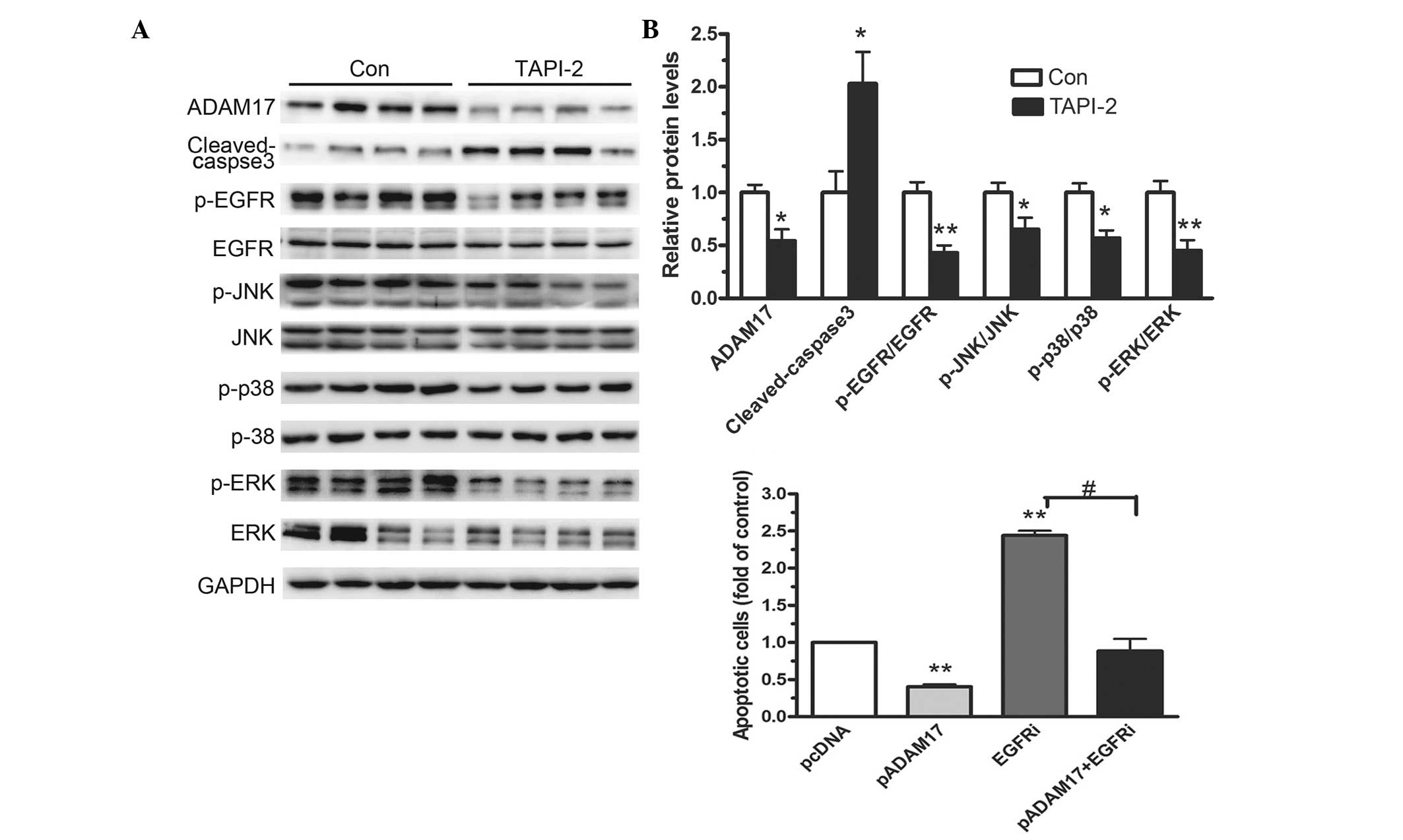|
1
|
Vidal PM, Lemmens E, Avila A, et al:
ADAM17 is a survival factor for microglial cells in vitro and in
vivo after spinal cord injury in mice. Cell Death Dis. 4:e9542013.
View Article : Google Scholar : PubMed/NCBI
|
|
2
|
Aghababaei M, Perdu S, Irvine K and
Beristain AG: A disintegrin and metalloproteinase 12 (ADAM12)
localizes to invasive trophoblast, promotes cell invasion and
directs column outgrowth in early placental development. Mol Hum
Reprod. 20:235–249. 2014. View Article : Google Scholar
|
|
3
|
Murthy A, Defamie V, Smookler DS, et al:
Ectodomain shedding of EGFR ligands and TNFR1 dictates hepatocyte
apoptosis during fulminant hepatitis in mice. J Clin Invest.
120:2731–2744. 2010. View
Article : Google Scholar : PubMed/NCBI
|
|
4
|
Wang X, Feuerstein GZ, Xu L, et al:
Inhibition of tumor necrosis factor-alpha-converting enzyme by a
selective antagonist protects brain from focal ischemic injury in
rats. Mol Pharmacol. 65:890–896. 2004. View Article : Google Scholar : PubMed/NCBI
|
|
5
|
Oyinbo CA: Secondary injury mechanisms in
traumatic spinal cord injury: a nugget of this multiply cascade.
Acta Neurobiol Exp (Wars). 71:281–299. 2011.
|
|
6
|
Wang XJ, Feng CW and Li M: ADAM17 mediates
hypoxia-induced drug resistance in hepatocellular carcinoma cells
through activation of EGFR/PI3K/Akt pathway. Mol Cell Biochem.
380:57–66. 2013. View Article : Google Scholar : PubMed/NCBI
|
|
7
|
Saxena R, Chandra V, Manohar M, et al:
Chemotherapeutic potential of
2-(piperidinoethoxyphenyl)-3-phenyl-2H-benzo(b) pyran in estrogen
receptor- Negative breast cancer cells: action via prevention of
EGFR activation and combined inhibition of PI-3-K/Akt/FOXO and
MEK/Erk/AP-1 pathways. PLoS One. 8:e662462013. View Article : Google Scholar
|
|
8
|
Roberts PJ and Der CJ: Targeting the
Raf-MEK-ERK mitogen-activated protein kinase cascade for the
treatment of cancer. Oncogene. 26:3291–3310. 2007. View Article : Google Scholar : PubMed/NCBI
|
|
9
|
Shen Q, Uray IP, Li Y, et al: Targeting
the activator protein 1 transcription factor for the prevention of
estrogen receptor-negative mammary tumors. Cancer Prev Res (Phila).
1:45–55. 2008. View Article : Google Scholar
|
|
10
|
Li Z, Zhang H, Chen Y, Fan L and Fang J:
Forkhead transcription factor FOXO3a protein activates nuclear
factor kappaB through B-cell lymphoma/leukemia 10 (BCL10) protein
and promotes tumor cell survival in serum deprivation. J Biol Chem.
287:17737–17745. 2012. View Article : Google Scholar : PubMed/NCBI
|
|
11
|
Yin XM: Signal transduction mediated by
Bid, a pro-death Bcl-2 family proteins, connects the death receptor
and mitochondria apoptosis pathways. Cell Res. 10:161–167. 2000.
View Article : Google Scholar : PubMed/NCBI
|
|
12
|
Seals DF and Courtneidge SA: The ADAMs
family of metalloproteases: multidomain proteins with multiple
functions. Genes Dev. 17:7–30. 2003. View Article : Google Scholar : PubMed/NCBI
|
|
13
|
Ware CF, VanArsdale S and VanArsdale TL:
Apoptosis mediated by the TNF-related cytokine and receptor
families. J Cell Biochem. 60:47–55. 1996. View Article : Google Scholar : PubMed/NCBI
|
|
14
|
Beattie MS, Harrington AW, Lee R, et al:
ProNGF induces p75-mediated death of oligodendrocytes following
spinal cord injury. Neuron. 36:375–386. 2002. View Article : Google Scholar : PubMed/NCBI
|
|
15
|
Micheau O and Tschopp J: Induction of TNF
receptor I-mediated apoptosis via two sequential signaling
complexes. Cell. 114:181–190. 2003. View Article : Google Scholar : PubMed/NCBI
|
|
16
|
Zhang J, Geula C, Lu C, Koziel H, Hatcher
LM and Roisen FJ: Neurotrophins regulate proliferation and survival
of two microglial cell lines in vitro. Exp Neurol. 183:469–481.
2003. View Article : Google Scholar : PubMed/NCBI
|
|
17
|
Chalaris A, Adam N, Sina C, et al:
Critical role of the disintegrin metalloprotease ADAM17 for
intestinal inflammation and regeneration in mice. J Exp Med.
207:1617–1624. 2010. View Article : Google Scholar : PubMed/NCBI
|
|
18
|
Tuszynski MH and Steward O: Concepts and
methods for the study of axonal regeneration in the CNS. Neuron.
74:777–791. 2012. View Article : Google Scholar : PubMed/NCBI
|
|
19
|
Liang X, Yang Y, Deng C, et al: The
variation of Caspase3 activity in tanshinone induced NB4 cells
apoptosis. Sichuan Da Xue Xue Bao Yi Xue Ban. 34:549–551. 2003.In
Chinese. PubMed/NCBI
|
|
20
|
Zheng X, Jiang F, Katakowski M, et al:
Inhibition of ADAM17 reduces hypoxia-induced brain tumor cell
invasiveness. Cancer Sci. 98:674–684. 2007. View Article : Google Scholar : PubMed/NCBI
|
|
21
|
Ebsen H, Schroder A, Kabelitz D and
Janssen O: Differential surface expression of ADAM10 and ADAM17 on
human T lymphocytes and tumor cells. PLoS One. 8:e768532013.
View Article : Google Scholar : PubMed/NCBI
|
|
22
|
Etzerodt A, Maniecki MB, Moller K, Moller
HJ and Moestrup SK: Tumor necrosis factor alpha-converting enzyme
(TACE/ADAM17) mediates ectodomain shedding of the scavenger
receptor CD163. J Leukoc Biol. 88:1201–1205. 2010. View Article : Google Scholar : PubMed/NCBI
|
|
23
|
Nieto-Sampedro M, Gomez-Pinilla F, Knauer
DJ and Broderick JT: Epidermal growth factor receptor
immunore-activity in rat brain astrocytes. Response to injury
Neurosci Lett. 91:276–282. 1988.
|
|
24
|
Hassemer EL, Endres B, Toonen JA,
Ronchetti A, Dubielzig R and Sidjanin DJ: ADAM17 transactivates
EGFR signaling during embryonic eyelid closure. Invest Ophthalmol
Vis Sci. 54:132–140. 2013. View Article : Google Scholar :
|
|
25
|
Parker WE, Orlova KA, Heuer GG, et al:
Enhanced epidermal growth factor, hepatocyte growth factor, and
vascular endothelial growth factor expression in tuberous sclerosis
complex. Am J Pathol. 178:296–305. 2011. View Article : Google Scholar : PubMed/NCBI
|
|
26
|
Fischer OM, Hart S and Ullrich A:
Dissecting the epidermal growth factor receptor signal
transactivation pathway. Methods Mol Biol. 327:85–97.
2006.PubMed/NCBI
|
|
27
|
Battersby S, Sales KJ, Williams AR, et al:
Seminal plasma and prostaglandin E2 up-regulate fibroblast growth
factor 2 expression in endometrial adenocarcinoma cells via
E-series prostanoid-2 receptor-mediated transactivation of the
epidermal growth factor receptor and extracellular signal-regulated
kinase pathway. Hum Reprod. 22:36–44. 2007. View Article : Google Scholar
|
|
28
|
Xu L, Huang Y, Yu X, Yue J, Yang N and Zuo
P: The influence of p38 mitogen-activated protein kinase inhibitor
on synthesis of inflammatory cytokine tumor necrosis factor alpha
in spinal cord of rats with chronic constriction injury. Anesth
Analg. 105:1838–1844, table of contents. 2007. View Article : Google Scholar : PubMed/NCBI
|
|
29
|
Koistinaho M and Koistinaho J: Role of p38
and p44/42 mitogen-activated protein kinases in microglia. Glia.
40:175–183. 2002. View Article : Google Scholar : PubMed/NCBI
|
|
30
|
Benakis C, Bonny C and Hirt L: JNK
inhibition and inflammation after cerebral ischemia. Brain Behav
Immun. 24:800–811. 2010. View Article : Google Scholar
|
|
31
|
Villapol S, Acarin L, Faiz M, Castellano B
and Gonzalez B: Distinct spatial and temporal activation of caspase
pathways in neurons and glial cells after excitotoxic damage to the
immature rat brain. J Neurosci Res. 85:3545–3556. 2007. View Article : Google Scholar : PubMed/NCBI
|
|
32
|
Koprivica V, Cho KS, Park JB, et al: EGFR
activation mediates inhibition of axon regeneration by myelin and
chondroitin sulfate proteoglycans. Science. 310:106–110. 2005.
View Article : Google Scholar : PubMed/NCBI
|



